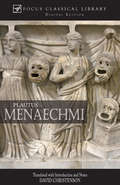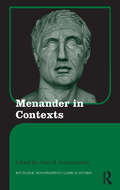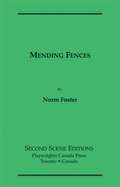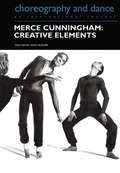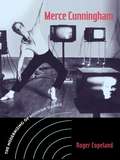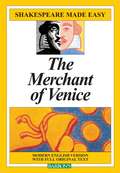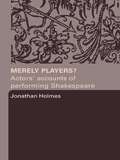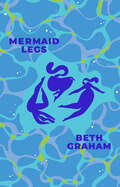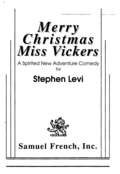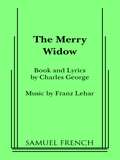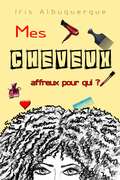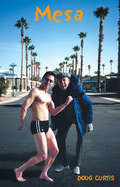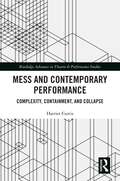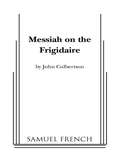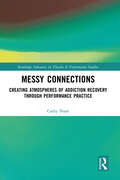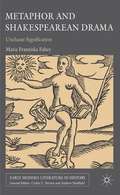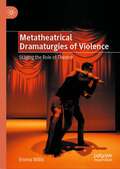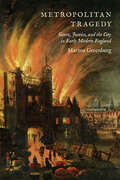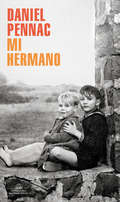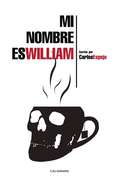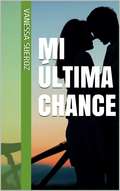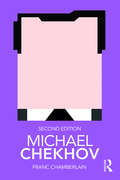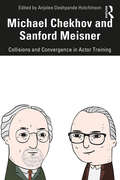- Table View
- List View
Menaechmi: The Menaechmus Brothers
by David Christenson PlautusThe play Menaechmi provides an introduction to the world of Roman comedy from one of its best practitioners, Plautus. As with all Focus translations, the emphasis is on an inexpensive, readable edition that is close to the original, with an extensive introduction, notes and appendices.
Menander in Antiquity
by Sebastiana NervegnaThe comic playwright Menander was one of the most popular writers throughout antiquity. This book reconstructs his life and the legacy of his work until the end of antiquity employing a broad range of sources such as portraits, illustrations of his plays, papyri preserving their texts and inscriptions recording their public performances. These are placed within the context of the three social and cultural institutions which appropriated his comedy, thereby ensuring its survival: public theatres, dinner parties and schools. Dr Nervegna carefully reconstructs how each context approached Menander's drama and how it contributed to its popularity over the centuries. The resultant, highly illustrated, book will be essential for all scholars and students not just of Menander's comedy but, more broadly, of the history and iconography of the ancient theatre, ancient social history and reception studies.
Menander in Contexts: Menander In Contexts (Routledge Monographs in Classical Studies #16)
by Alan H. SommersteinThe comedies of the Athenian dramatist Menander (c. 342-291 BC) and his contemporaries were the ultimate source of a Western tradition of light drama that has continued to the present day. Yet for over a millennium, Menander’s own plays were thought to have been completely lost. Thanks to a long and continuing series of papyrus discoveries, Menander has now been able to take his place among the major surviving ancient Greek dramatists alongside Aeschylus, Sophocles, Euripides and Aristophanes. In this book, sixteen contributors examine and explore the Menander we know today in light of the various literary, intellectual, and social contexts in which his plays can be viewed. Topics covered include: the society, culture, and politics of his generation; the intellectual currents of the period; the literary precursors who inspired Menander (or whom he expected his audiences to recall); and responses to Menander, from his own time to ours. As the first wide-ranging collective study of Menander in English, this book is essential reading for those interested in ancient comedy the world over.
Menander, New Comedy and the Visual
by Antonis K. PetridesThis book argues that New Comedy has a far richer performance texture than has previously been recognised. Offering close readings of all the major plays of Menander, it shows how intertextuality - the sustained dialogue of New Comedy performance with the diverse ideological, philosophical, literary and theatrical discourses of contemporary polis culture - is crucial in creating semantic depth and thus offsetting the impression that the plots are simplistic love stories with no political or ideological resonances. It also explores how the visual aspect of the plays ('opsis') is just as important as any verbal means of signification - a phenomenon termed 'intervisuality', examining in particular depth the ways in which the mask can infuse various systems of reference into the play. Masks like the panchrēstos neaniskos (the 'all-perfect youth'), for example, are now full of meaning; thus, with their ideologically marked physiognomies, they can be strong instigators of literary and cultural allusion.
Mending Fences
by Norm FosterHarry Sullivan hasn't seen his son Drew in thirteen years, and now Drew is coming to Harry's Saskatchewan ranch for a visit. This poignant comedy tells the story of two men who are too stubborn to give in to feelings of the heart.
Merce Cunningham: Creative Elements (Choreography and Dance Studies Series #Vols. 4, Pts. 2.)
by Joan Acocella David Vaughan Gordon Mumma Thecla Schiphorst William Fetterman Elliot Caplan Marilyn Vaughan Drown John Holzaepfel Nelson RiveraMerce Cunningham reached the age of 75 in 1994, an age at which many creative artists are content to rest on their laurels, or at least to leave behind whatever controversies they may have caused during their careers. No so Cunningham. In the first place, his 70s have been a time of intense creativity in which he has choreographed as many as four new works a year. Cunningham is a strongly committed as ever to the discovery of new ways of moving and of making movement, refusing to be hampered by the physical limitations that have come with age. Since 1991 every new work has been made at least in part with the use of the computer program Life Forms, which enables him to devise choreographic phrases that he himself would be unable to perform - and which challenge and develop the virtuosity of the young dancers in his company.The essays collected in this special issue of Choreography and Dance were written over the last few years and discuss various aspects of the work of Cunningham as seen both from the outside and the inside.
Merce Cunningham: The Modernizing of Modern Dance
by Roger CopelandFirst Published in 2004. Routledge is an imprint of Taylor & Francis, an informa company.
Merchant of Venice (Shakespeare Made Easy)
by William ShakespeareHere are the books that help teach Shakespeare plays without the teacher constantly needing to explain and define Elizabethan terms, slang, and other ways of expression that are different from our own. Each play is presented with Shakespeare's original lines on each left-hand page, and a modern, easy-to-understand "translation" on the facing right-hand page. All dramas are complete, with every original Shakespearian line, and a full-length modern rendition of the text. These invaluable teaching-study guides also include: Helpful background information that puts each play in its historical perspective. Discussion questions that teachers can use to spark student class participation, and which students can use as springboards for their own themes and term papers. Fact quizzes, sample examinations, and other features that improve student comprehension of what each play is about.
Merely Players?: Actors' Accounts of Performing Shakespeare
by Jonathan HolmesMerely Players? marks a groundbreaking departure in Shakespeare studies by giving direct voice to the Shakespearean performer. It draws on three centuries worth of actors' written reflections on playing Shakespeare and brings together the dual worlds of performance and academia, providing a unique resource for the student and theatre-lover alike.
Mermaid Legs
by Beth GrahamSisters Billie, Ava, and Scarlet start a new tradition of family dinners every second Sunday, rain or shine. But when Billie doesn’t show up one night, her sisters have every reason to worry. With a history of self-harm and regularly being on and off her medication, they’ve become all too familiar with Billie’s unpredictable behaviour. Now that Billie has disappeared—leaving behind her disastrous apartment, her phone, and a mysterious message—a frantic chase ensues, pushing their unshakable bond to its limits.From the celebrated author of The Gravitational Pull of Bernice Trimble and co-author of The Drowning Girls, Beth Graham’s Mermaid Legs tells the story of a precarious life fluctuating between calm and chaos, and those on the sidelines desperately trying to catch up. A deep dive into the stigmas, challenges, and mysteries of mental illness, this compassionate family saga illuminates the beauty of neurodiversity and the unyielding strength of sisterhood.
Merry Christmas Miss Vickers
by Stephen LeviComedy / 3m, 9f or 6m, 6f / Unit set / Ghosts, mystery, time travel and the teacher from your worst nightmare return in this exciting sequel to the popular Good Morning Miss Vickers. Five teens are whisked back to 1910 where the ghostly Miss Vickers intends to give her twelve year old self a Christmas present against the wishes of her demonic father, Black Angus (the last pirate). And after Christmas, Miss Vickers intends to keep her five captive students forever.
Merry Widow
by Charles GeorgeOperetta \ 6 m, 12 f w/flexible chorus. \ Int. \ All the world famous songs have been retained, embellished with new lyrics that critics believe to be the best words ever to the Lehar score. There's a new story of a dashing European prince and his romance with a beautiful American widow. The comedy is clever and wholesome and is not difficult to cast or stage.
Mes cheveux , affreux pour qui ?
by Iris Albuquerque Audrey BroduO que é preciso saber é Laura, une héroïne noire. Nous relatons ici la trajectoire vie, inter, nous nous focalisons sur les traumatismes et les préjugés qu'elle a vécu depuis le jardin d'enfance. Dans ce free a ya aussi un peu de l'histoire de Júlio et Rita, les amis inséparables de Laura. C'est à fois triste e o convidados momentos divertidos. Laura nous raconte, ses rêves, ses drames. Les moments qui marté son enfance, son adolescence et début de sa vie d'adulte. Elle cherche des moyens d'affronter les faits sans pour autant renoncer à tout. E o diretor não pode ser visto como um traumatismo. E peare os cavaleiros, os romances de amor, uma próxima paixão pela história da Laura, apresenta uma palestra à moda apaixonante e cativante. Mais do que isso, você pode curtir mais um hino à liberdade!
Mesa
by Doug CurtisPaul is asked to drive his wife's 93-year-old Grandpa "Bud" all the way from Calgary to his retirement trailer in Mesa, Arizona. Paul hopes to find strange, roadside diners and sleep out under the stars. Bud wants Denny's and Motel 6. Paul and Bud spend five days together, navigating the predictable turnoffs on the Interstate while discovering their need for each other, sharing their lives and experiences, their hopes and dreams. This will be Bud's final year in Mesa, and Paul is his chauffeur.
Mess and Contemporary Performance: Complexity, Containment, and Collapse (Routledge Advances in Theatre & Performance Studies)
by Harriet CurtisThis book identifies and theorises mess in contemporary performance and argues that mess offers a site from which subjects might mobilise and find agency, even as the complexity (and indeed messiness) of everyday life conditions and contains.Using a queer feminist and intersectional critical framework, this book analyses how established and emerging artists mess with and mess up capitalist tendencies towards productivity, usefulness, and efficiency. Whilst the materiality of mess provides a starting point and emerges in many of the works analysed, the implications of mess as related to vulnerability, shame, and resistance occupy a larger space in the book’s chapters. These performances are messy not only in content or style; they reveal critical readings of how perceived-as messy' subjects and practices are shaped and regulated. In attending to the public, personal, and structural uses of mess, and emphasising the critical possibilities of what might otherwise be skipped over or cleared away, this book develops and opens out shared understandings of mess as creative chaos and as a practice of political action or change.This book will be of particular interest to students and scholars incontemporary theatre, art, and performance.
Messiah on the Frigidaire
by John CulbertsonThe small town of Elroy, South Carolina is thrust into the evangelical spotlight when what seems to be the image of Jesus appears on a refrigerator in a trailer park. The discovery by Lou Ann Hightower, her husband Dwayne, and her best friend Betsy, sets into motion a frenzy of conflict, communion and good old fashioned commerce. When the National Investigator turns the appearance into front-page headlines, their trailer park becomes a Mecca for miracle seekers, soul searchers and disciples with a decidedly political agenda. At the urging of the towns business leaders, Betsy pretends to get messages from the appliance-based apparition, and the crowds multiply like loaves and fishes. Through the ordeal, the three undergo an evolution in their relationships with each other, and they are forced to come to grips with their lowly status in the caste system of the rural south. In a region where religion is as much a part of life as grits and cotton fields, God surely moves in mysterious ways.
Messy Connections: Creating Atmospheres of Addiction Recovery Through Performance Practice (ISSN)
by Cathy SloanThis book examines performance practices that involve people in recovery from addiction, theorising such practices as recovery-engaged.Focusing on examples of practice from a growing movement of UK-based recovery arts practitioners and performers, it highlights a unique approach to performance that infuses an understanding of lived experiences of addiction and recovery with creative practice. It offers a philosophy of being in recovery that understands lived experience, and performance practice, as a dynamic system of interrelations with the human and nonhuman elements that make up the societal settings in which recovery communities struggle to exist. It thereby frames the process of recovery, and recovery-engaged performance, as an affective ecology – a system of messy connections. Building upon ideas from posthumanist research on addiction, cultural theory on identity and new materialist interpretations of performance practice, it considers how such contemporary theory might offer additional ways of thinking and doing arts practice with people affected by addiction. The discussion highlights the distinct aesthetics, ethics and politics of this area of performance practice.This study will be of great interest to students and scholars in Applied Theatre and Critical Arts and Mental Health studies.
Metaphor and Shakespearean Drama
by Maria Franziska FaheyMetaphor and Shakespearean Drama explores the fruitful and potentiallydisorderly nature of metaphorical utterances in Shakespearean drama. Borrowing its title from Henry Peacham's 1593 warning that 'there be no uncleane or unchast e] signification contained in the Metaphore, ' it explores the worry expressed in Elizabethan rhetoric books that a metaphor might beget illegitimate meanings. Shakespeare's plays demonstrate that a metaphor can indeed generateunruly meanings which, once uttered, have the power to transform a community. Analyses of Othello, Titus Andronicus, Macbeth, King Henry IV Part 1, Hamlet, and The Tempest demonstrate various aspects of metaphoric performance. Theseinclude metaphor's power to import discourses into speech communities; metaphor's sacrificial nature; the relationship between metaphor and equivocation; metaphor's carnivalesque qualities; dead metaphor's ability to haunt living speech; and metaphor'sability to circulate unacknowledged collective fantasies. "
Metatheatrical Dramaturgies of Violence: Staging the Role of Theatre
by Emma WillisThis book examines a series of contemporary plays where writers put theatre itself on stage. The texts examined variously dramatize how theatre falls short in response to the demands of violence, expose its implication in structures of violence—including racism and gender-based violence—and illustrate how it might effectively resist violence through reconfiguring representation. Case studies, which include Jackie Sibblies Drury’s We Are Proud to Present and Fairview, Ella Hickson’s The Writer and Tim Crouch’s The Author, provide a range of practice-based perspectives on the question of whether theatre is capable of accounting for and expressing the complexities of structural and interpersonal violence as both lived in the body and borne out in society. The book will appeal to scholars and artists working in the areas of violence, theatre and ethics, witnessing, memory and trauma, spectatorship and contemporary dramaturgy, as well as to those interested in both the doubts and dreams we have about the role of theatre in the twenty-first century.
Metropolitan Tragedy
by Marissa GreenbergBreaking new ground in the study of tragedy, early modern theatre, and literary London, Metropolitan Tragedy demonstrates that early modern tragedy emerged from the juncture of radical changes in London's urban fabric and the city's judicial procedures. Marissa Greenberg argues that plays by Shakespeare, Milton, Massinger, and others rework classical conventions to represent the city as a locus of suffering and loss while they reflect on actual sources of injustice in sixteenth- and seventeenth-century London: structural upheaval, imperial ambition, and political tyranny.Drawing on a rich archive of printed and manuscript sources, including numerous images of England's capital, Greenberg reveals the competing ideas about the metropolis that mediated responses to theatrical tragedy. The first study of early modern tragedy as an urban genre, Metropolitan Tragedy advances our understanding of the intersections between genre and history.
Mi hermano
by Daniel PennacLa obra más íntima de Pennac, una memoria que convierte al Bartleby de Melville en un espejo para comprender y recordar a su hermano. En su libro más personal hasta la fecha, Daniel Pennac recuerda de la manera más emotiva y original a su hermano fallecido: a través de la figura de Bartleby, el célebre escribiente de Herman Melville. Así, Pennac amplía las costuras de la literatura de duelo y se sirve de su amor por las letras para crear unas memorias preciosas. El autor parte de una certeza compartida por todos: nunca llegamos a conocer en su totalidad a nuestros seres más queridos. Con el objetivo de comprender mejor a su hermano, Pennac revisita al escribiente procrastinador de Melville, un personaje muy querido por los dos, y le convierte en una suerte de espejo en el que observar y recordar a Bernard. Así Pennac firma un libro de una ternura infinita que se convierte a la vez en una oda a la literatura. La crítica ha dicho...«Un texto de una gran belleza.»Le Figaro «El escritor rinde un bello homenaje a quien le transmitió el amor por la literatura, su hermano mayor Bernard, tan parecido al personaje de Melville.»Le Monde «Magnífica historia, un grito sobrecogedor de amor al hermano desaparecido.»L'Express «El escritor francés da voz a una dimensión íntima»Eleonora Groppetti, Corriere di Novara «La fragilidad de los supervivientes.»Nadia Terranova, Il Foglio «Pennac [...] no necesita ganarse el corazón de sus lectores. Ya está en sus corazones.»Eleonora Groppetti, Corriere di Novara «Un homenaje al hermano amado y perdido.»La Repubblica «Refinado.»Corriere di Novara «Una novela que describe la figura del hermano perdido, entre los recuerdos personales y la literatura.»La Stampa «Esta historia de construcción admirable está impregnada tanto por la ternura hacia un hermano como por el amor hacia la literatura. Jamás se ha encontrado nada mejor para prolongar la vida de los desaparecidos. Daniel Pennac lo logra con una naturalidad abrumadora.»Olivia de Lamberterie, Elle France «Con una ternura infinita, Daniel Pennac habla de la distancia y el humor de su hermano, el placer de su compañía, su presencia atenta y discreta.»Michel Abescat, Télérama «Un libro de una gran belleza melancólica donde Daniel Pennac -el seductor, el profesor que agrada a su público- abandona el centro de atención para revelar la originalidad herida, la renuncia de su hermano soñador.»Patrick Grainville, Le Figaro Littéraire
Mi nombre es William
by Carlos Espejo¿Qué pasaría si el dramaturgo más famoso de todos los tiempos se quedara sin imaginación? <P><P>En un Londres actual, un joven dramaturgo frustrado por su trabajo, llamado William Shakespeare, entra en su pequeño estudio. No tiene ni con qué comer, la inspiración parece que le ha abandonado desde hacía mucho tiempo. Su editor le pide el manuscrito de su obra La venganza de las familias y tiene menos de cuarenta y ocho horas para terminarlo. William les ruega desesperadamente, sin esperanza, ayuda a las musas del teatro. Su llamada recibe respuesta... <P>Esa será la última noche que dormirá plácidamente nuestro protagonista.
Mi última chance
by Carlos Oliveira Vanessa SuerozIgor está en el primer año de la facultad, pero en vez de concentrarse totalmente en los estudios, él no piensa en otra cosa que no sea una morena. Entre peleas y desencuentros su mejor amigo le propone una puesta que puede cambiar totalmente a su vida. ¿Será que él irá conquistar a su chica o la perderá para todo el siempre?
Michael Chekhov (Routledge Performance Practitioners)
by Franc ChamberlainFollowing in the footsteps of his renowned teacher Konstantin Stanislavsky, Michael Chekhov’s work as an actor, author and theatre practitioner gave great insight into how to access the creative self. This revised and updated edition of Michael Chekhov includes: • A biographical introduction to Chekhov’s life • A clear explanation of his key writings • An analysis of his work as a director • A practical guide to Chekhov’s unique actor-training exercises. As a first step towards critical understanding, and as an initial exploration before going on to further, primary research, Routledge Performance Practitioners offer unbeatable value for today’s student.
Michael Chekhov and Sanford Meisner: Collisions and Convergence in Actor Training
by Anjalee Deshpande HutchinsonMichael Chekhov and Sanford Meisner: Collisions and Convergence in Actor Training offers a comprehensive analysis of the Sanford Meisner Acting Technique in comparison to the Michael Chekhov Acting Technique. This compilation reveals the connections as well as the contradictions between these two very different approaches, while highlighting meaningful bridges and offering in-depth essays from a variety of sources, including master teachers with years of experience and new and rising stars in the field. The authors provide philosophical arguments on actor training, innovative approaches to methodology, and explorations into integration, as well as practical methods of application for the classroom or rehearsal room, or scaffolded into a curriculum. Michael Chekhov and Sanford Meisner: Collisions and Convergence in Actor Training is an excellent resource for professors teaching Introductory, Intermediate or Advanced Acting Technique as well as acting program directors and department chairs seeking new, impactful research on actor training.
